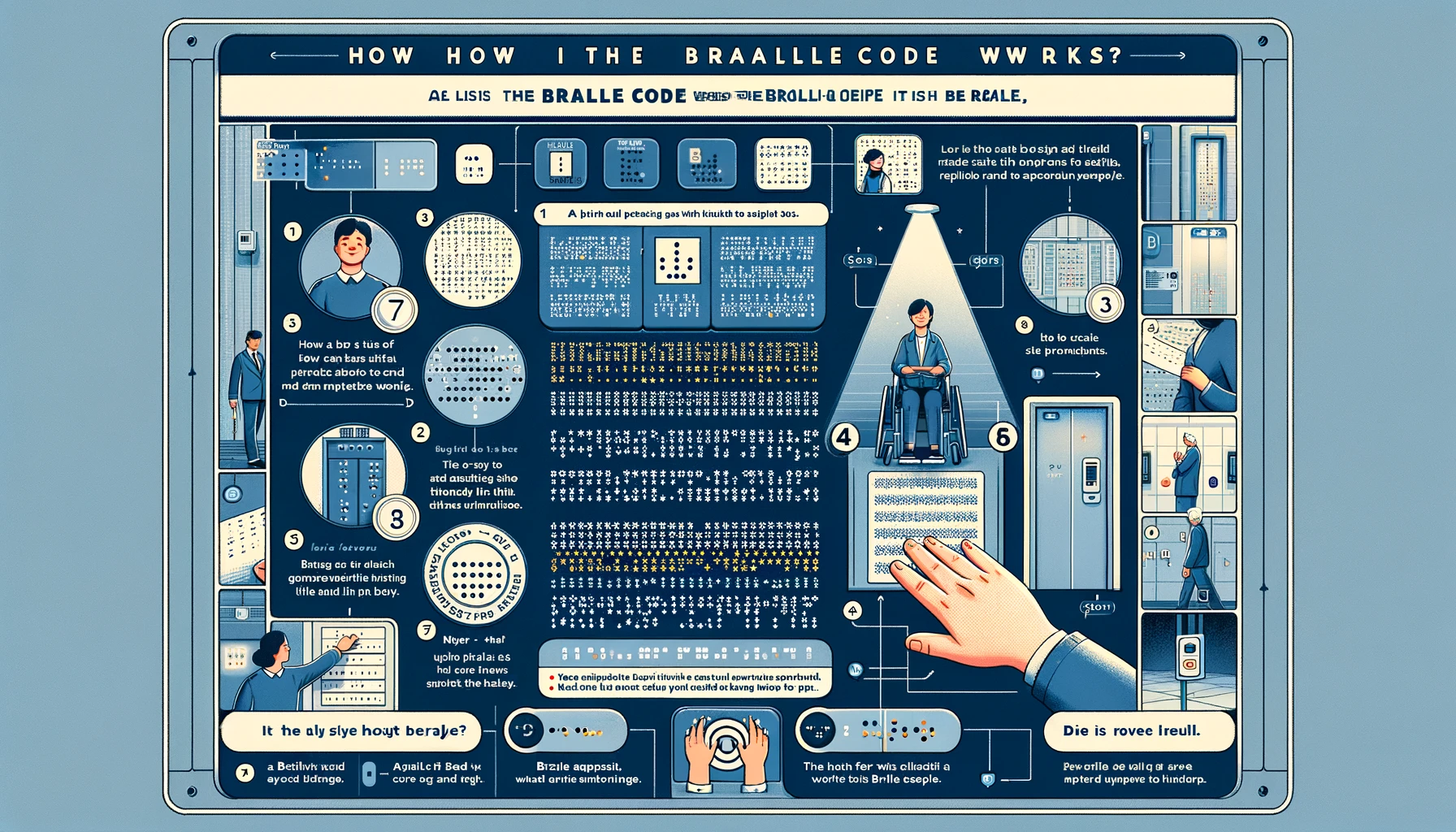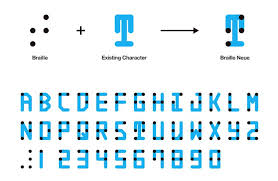Braille is a system that allows the blind to read and write by passing their fingers through dots that are equivalent to the letters of the alphabet.It is a system of reading for the blind, using raised dots as symbols for each letter. Developed in France in 1824 by Louis Braille (1809-52), the characters were derived from a “point writing” system, using embossed dots and dashes for coded army messages.

Blind at the age of three, Braille was sent as a foundling to the National Institute for the Young Blind in Paris. After developing into an accomplished organist and cellist, Braille returned to the institute to teach. At the time, only 14 books existed for the blind, all of them in embossed alphabetical characters that few blind people ever learned to master.
Braille characters are based on a configuration of six large raised dots referred to as the braille cell. To help children learn the system, he numbered each position of the cell as follows
: (1) • – (4)
(2) . . (5)
(3) . . (6)
Each character in the alphabet is formed by removing one or more dots from the basic con- figuration, thus allowing the reader to distinguish each from the others by the number and position of the remaining dots. The first 10 characters serve as both letters and numerals — that is, a, 1; b, 2; c, 3; etc., through j, 0. In addition to the 26 letters of the alphabet, a separate character serves to indicate a capital or upper case letter and a second separate character indicates whether the character that follows is a numeral or a letter. In 1942, a machine called a braille writer was developed to produce braille mechanically.
How The Braille Code Works
Braille generally consists of six-dot cells in relief, organized as a matrix of three rows by two columns, which are conventionally numbered from top to bottom and from left to right, as shown in the following figure:
With these six points you get 64 different combinations. With the reliefs conveniently placed to one or another position, the letters are obtained. In the case of capital letters or numbers, a prefix is placed before the symbol matrix. These prefix is also a matrix of points that indicates that what comes next is an uppercase or a number. For example, the following drawing represents the letter A (a relay at position 1)
Instead, the following is the number 1: the numerical prefix (reliefs in 3, 4, 5, 6) followed by the letter A
The expertise and ability of Braille has made it possible for millions of people throughout the world to be more autonomous despite being blind. One example is that in the Andalusian regional elections of 2008, the blind could do so with the Braille code.
The Braille system is a tactile reading and writing system used by people who are visually impaired. It was invented by Louis Braille in the 19th century. The system represents alphabetic and numerical symbols using six dots arranged in a grid of two parallel vertical rows of three dots each. Here’s a guide to the Braille system in a tabular format:
| Braille Cell | Representation |
|---|---|
| ⠼ | Number sign |
| ⠃ | B |
| ⠉ | C |
| ⠙ | D |
| ⠑ | E |
| ⠋ | F |
| ⠛ | G |
| ⠓ | H |
| ⠊ | I |
| ⠚ | J |
| ⠅ | K |
| ⠇ | L |
| ⠍ | M |
| ⠝ | N |
| ⠕ | O |
| ⠏ | P |
| ⠟ | Q |
| ⠗ | R |
| ⠎ | S |
| ⠞ | T |
| ⠥ | U |
| ⠧ | V |
| ⠺ | W |
| ⠭ | X |
| ⠽ | Y |
| ⠵ | Z |
| ⠼⠁ | 1 |
| ⠼⠃ | 2 |
| ⠼⠉ | 3 |
| ⠼⠙ | 4 |
| ⠼⠑ | 5 |
| ⠼⠋ | 6 |
| ⠼⠛ | 7 |
| ⠼⠓ | 8 |
| ⠼⠊ | 9 |
| ⠼⠚ | 0 |
Each Braille character or “cell” is made up of six dots, where each dot has a specific position in the cell:
- Upper left
- Middle left
- Lower left
- Upper right
- Middle right
- Lower right
Different combinations of these six dots are used to represent different letters, numbers, and punctuation marks. Braille can be written by hand using a slate and stylus in which dots are made from the back of the page, making them raised on the front side, or it can be produced on a Braille typewriter or Perkins Brailler, or printed on a Braille printer.
